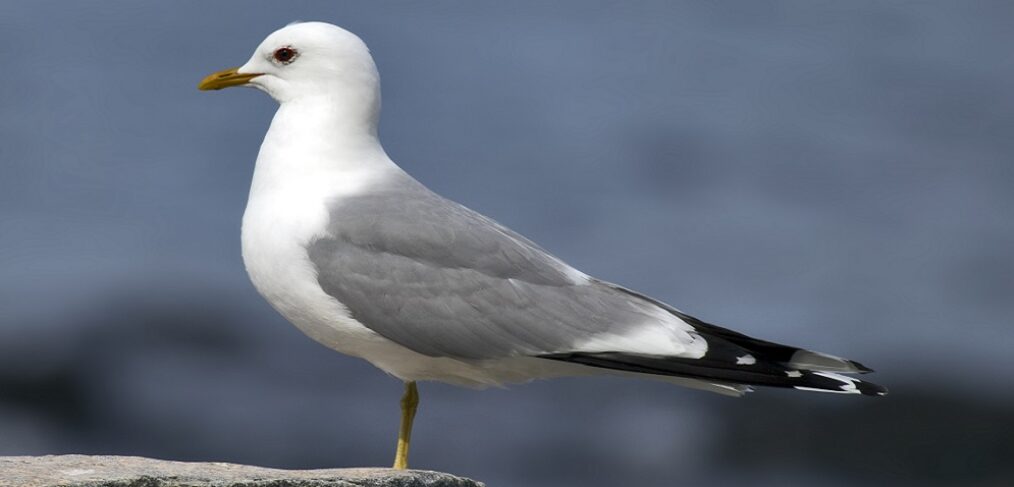
species of the week #88 – common gull
Common Gulls are real daredevils? Out and about in the biggest storms and always with their beaks in the wind? Not at all! Gulls are more like the rabbit’s feet among gulls. They got their name because they fly back to the coast quickly even in light winds and look for a sheltered spot. This is why they can be seen more often than other gull species in inland areas and along rivers.
| Distribution status in Rhineland-Palatinate | Very rare, as not a breeding bird |
| deposits | North and Baltic Sea |
| Last sighting in Rhineland-Palatinate | 2019 in Maximiliansau |
| Habitat | Coasts, inland lakes and marshy grassland |
| Threat | unthreat |
In Rhineland-Palatinate, the Common Gull is not a regular breeding bird; it lacks large water areas. However, it can be seen regularly as a migrant and for a few weeks as a winter visitor along the Rhine. Breeding occurrences in inland Central Europe are concentrated on stillwaters along the major river courses, if necessary also in flooded open-cast mines, fishpond areas or quarry lakes.
The plumage of the elegant-looking Mew Gull is predominantly white, with silver-grey wing upperparts and black wing tips; bill and legs are coloured yellow-green. The diet is varied and consists of worms, insects, but also plants and waste.
It is important to find a site with short vegetation, but without bare patches, preferably elevated. When building a nest, there is a clear division of tasks between the sexes. The male procures the building material and deposits it at a certain distance from the nest. The female selects the appropriate components and builds a large nest on bulbs, poles or pollarded willows or on the dry ground near the water. Once storm-petrels have found a good nesting site, they return there every year.
Storm-petrels have learned a special trick from starlings. When insects, larvae and small bugs are scarce, but this soft food is urgently needed to raise their young, they feed their young with cherries. These are soft and can be easily swallowed by the nestlings. If a worm hides in them from time to time, all the better.
Click here for more exciting species of the week
Image: By Andreas Trepte – Own work, CC BY-SA 2.5, https://commons.wikimedia.org/w/index.php?curid=10944645
